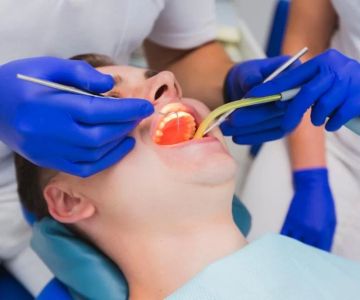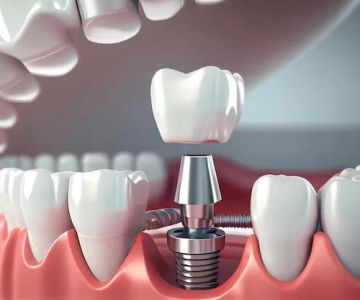Preventive Measures in General Dentistry: Key Practices for Maintaining Healthy Teeth and Gums
- The Importance of Prevention in Dentistry
- Regular Checkups: A Cornerstone of Preventive Care
- Good Oral Hygiene Practices
- Dietary Considerations for Healthy Teeth
- The Role of Fluoride Treatment in Preventive Care
- Dental Sealants: A Barrier Against Cavities
The Importance of Prevention in Dentistry
Preventive care is a cornerstone of general dentistry, designed to help individuals maintain optimal oral health. This proactive approach goes beyond fixing problems and focuses on preventing issues before they arise. Whether you’re looking to avoid cavities, gum disease, or other oral health complications, preventive measures are essential.
Preventing dental issues can save time, money, and unnecessary pain, while promoting a healthier lifestyle. Many people overlook the importance of regular checkups and oral hygiene, but consistent care can significantly reduce the risk of severe dental problems later in life.
Regular Checkups: A Cornerstone of Preventive Care
One of the most critical aspects of preventive care is scheduling regular dental checkups. These visits help detect early signs of dental issues, allowing for timely treatment before the problems become severe. Dentists often perform thorough cleanings, check for cavities, assess the health of gums, and monitor any changes in oral health that may need attention.
A personal story from a dental patient highlights the benefits of routine checkups. Sarah, a long-time patient at her local dental clinic, avoided costly dental procedures due to her consistent visits every six months. Her dentist was able to catch early-stage gum disease, which was promptly treated with minimal intervention. This prevented her from needing more invasive treatments like deep cleanings or surgeries.
Good Oral Hygiene Practices
Good oral hygiene is the foundation of any preventive dental care routine. Brushing your teeth twice a day with fluoride toothpaste and flossing regularly are the most effective ways to remove plaque and prevent cavities. Brushing should be done for at least two minutes, reaching all areas of your teeth and gums, while flossing removes food particles and plaque between the teeth that brushing misses.
In addition to these basic practices, mouthwash can be used to reduce bacteria and freshen breath. Adopting these habits daily can go a long way in keeping your teeth and gums healthy and reducing your risk of tooth decay and gum disease.
Dietary Considerations for Healthy Teeth
Your diet plays a significant role in your oral health. Foods high in sugar and acidic beverages like soda can contribute to tooth decay and enamel erosion. Instead, a balanced diet rich in calcium, phosphorus, and vitamins A and C supports strong teeth and gums. Dairy products, leafy greens, and crunchy fruits and vegetables can help promote oral health.
Additionally, it’s important to drink plenty of water throughout the day, especially after meals, to wash away food particles and help maintain a clean mouth. Avoid snacking between meals to give your teeth a break from constant exposure to sugar and acid.
The Role of Fluoride Treatment in Preventive Care
Fluoride treatment is an effective preventive measure that helps strengthen enamel and protect against cavities. Many communities have fluoridated water, but additional treatments can be applied during dental visits for extra protection, especially for children or individuals with a high risk of developing tooth decay.
A case study involving fluoride treatments demonstrates how these services can drastically improve dental health. John, who had frequent cavities throughout his childhood, experienced fewer dental issues after receiving regular fluoride treatments during his checkups, helping to protect his teeth from decay.
Dental Sealants: A Barrier Against Cavities
Dental sealants are thin coatings applied to the chewing surfaces of the back teeth, where cavities are most likely to develop. They act as a barrier, preventing bacteria and food particles from getting into the grooves and causing decay. Sealants are especially beneficial for children and teenagers, as they have deeper grooves in their molars that are more susceptible to cavities.
A local dentist shared a success story involving dental sealants for a teenager who had a history of tooth decay. After applying sealants, the patient’s risk of cavities significantly decreased, and they haven’t needed fillings since.







 Kangaroo Smiles Pediatric Dentistry and Orthodontics4.0 (1308 review)
Kangaroo Smiles Pediatric Dentistry and Orthodontics4.0 (1308 review) Unbraced Invisalign Studio4.0 (74 review)
Unbraced Invisalign Studio4.0 (74 review) Orthodontic Care of Washington - Tacoma4.0 (327 review)
Orthodontic Care of Washington - Tacoma4.0 (327 review) Foreside Dental Health Care4.0 (245 review)
Foreside Dental Health Care4.0 (245 review) Affordable Dental at Eastern & Windmill4.0 (287 review)
Affordable Dental at Eastern & Windmill4.0 (287 review) Smiles of Elgin4.0 (46 review)
Smiles of Elgin4.0 (46 review) The Importance of Oral Health Education During Pregnancy for a Healthy Pregnancy
The Importance of Oral Health Education During Pregnancy for a Healthy Pregnancy Best Tips for Brushing Your Teeth Properly for Healthy Gums: Essential Techniques for Oral Health
Best Tips for Brushing Your Teeth Properly for Healthy Gums: Essential Techniques for Oral Health Why Skipping Dental Checkups Can Lead to Bigger Oral Health Problems
Why Skipping Dental Checkups Can Lead to Bigger Oral Health Problems Advantages of Porcelain Dental Restorations
Advantages of Porcelain Dental Restorations How Can Diabetes Cause Tooth and Gum Problems? Preventing and Managing Oral Health Issues
How Can Diabetes Cause Tooth and Gum Problems? Preventing and Managing Oral Health Issues Healthy Habits for Promoting Good Oral Health and Hygiene: Tips for a Healthy Smile
Healthy Habits for Promoting Good Oral Health and Hygiene: Tips for a Healthy Smile